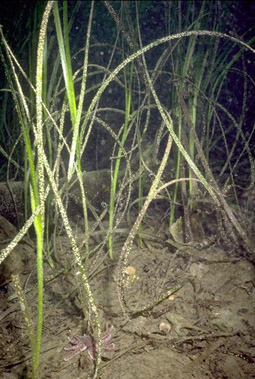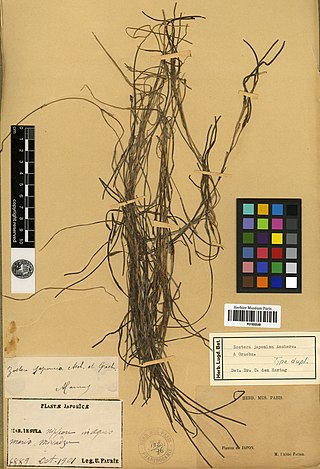
The Stramenopiles, also called Heterokonts, are a clade of organisms distinguished by the presence of stiff tripartite external hairs. In most species, the hairs are attached to flagella, in some they are attached to other areas of the cellular surface, and in some they have been secondarily lost. Stramenopiles represent one of the three major clades in the SAR supergroup, along with Alveolata and Rhizaria.

The alveolates are a group of protists, considered a major clade and superphylum within Eukarya. They are currently grouped with the stramenopiles and Rhizaria among the protists with tubulocristate mitochondria into the SAR supergroup.

The axodines are a group of unicellular stramenopiles that includes silicoflagellate and rhizochromulinid algae, actinomonad heterotrophic flagellates and actinophryid heliozoa. Alternative classifications treat the dictyochophytes as heterokont algae, or as Chrysophyceae. Other overlapping taxonomic concepts include the Actinochrysophyceae, Actinochrysea or Dictyochophyceae sensu lato. The grouping was proposed on the basis of ultrastructural similarities, and is consistent with subsequent molecular comparisons.

Labyrinthulomycetes (ICBN) or Labyrinthulea (ICZN) is a class of protists that produce a network of filaments or tubes, which serve as tracks for the cells to glide along and absorb nutrients for them. The two main groups are the labyrinthulids and thraustochytrids. They are mostly marine, commonly found as parasites on algae and seagrasses or as decomposers on dead plant material. They also include some parasites of marine invertebrates and mixotrophic species that live in a symbiotic relationship with zoochlorella.

Zostera is a small genus of widely distributed seagrasses, commonly called marine eelgrass, or simply seagrass or eelgrass, and also known as seaweed by some fishermen and recreational boaters including yachtsmen. The genus Zostera contains 15 species.

Bicosoecida (ICZN) or Bicosoecales/Bicoecea (ICBN) is an order of Bikosea, a small group of unicellular flagellates, included among the stramenopiles. Informally known as bicosoecids, they are a small group of unicellular flagellates. The cells are free-living, with no chloroplasts, and in some genera are encased in a lorica.

The raphidophytes, formally known as Raphidophycidae or Raphidophyceae, are a small group of eukaryotic algae that includes both marine and freshwater species. All raphidophytes are unicellular, with large cells, but no cell walls. Raphidophytes possess a pair of flagella, organised such that both originate from the same invagination. One flagellum points forwards, and is covered in hair-like mastigonemes, while the other points backwards across the cell surface, lying within a ventral groove. Raphidophytes contain numerous ellipsoid chloroplasts, which contain chlorophylls a, c1 and c2. They also make use of accessory pigments including β-carotene and diadinoxanthin. Unlike other heterokontophytes, raphidophytes do not possess the photoreceptive organelle typical of this group.
Lottia alveus, the eelgrass limpet or bowl limpet, was a species of sea snail or small limpet, a marine gastropod mollusk in the family Lottiidae, the Lottia limpets, a genus of true limpets. This species lived in the western Atlantic Ocean.

Ochrophytes, also known as heterokontophytes or stramenochromes, are a group of algae. They are the photosynthetic stramenopiles, a group of eukaryotes, organisms with a cell nucleus, characterized by the presence of two unequal flagella, one of which has tripartite hairs called mastigonemes. In particular, they are characterized by photosynthetic organelles or plastids enclosed by four membranes, with membrane-bound compartments called thylakoids organized in piles of three, chlorophyll a and c as their photosynthetic pigments, and additional pigments such as β-carotene and xanthophylls. Ochrophytes are one of the most diverse lineages of eukaryotes, containing ecologically important algae such as brown algae and diatoms. They are classified either as phylum Ochrophyta or Heterokontophyta, or as subphylum Ochrophytina within phylum Gyrista. Their plastids are of red algal origin.

Bigyra is a phylum of microscopic eukaryotes that are found at the base of the Stramenopiles clade. It includes three well-known heterotrophic groups Bicosoecida, Opalinata and Labyrinthulomycetes, as well as several small clades initially discovered through environmental DNA samples: Nanomonadea, Placididea, Opalomonadea and Eogyrea. The classification of Bigyra has changed several times since its origin, and its monophyly remains unresolved.
The genus Labyrinthula is part of the protist group Labyrinthulomycetes and contains thirteen species. The major feature of this genus is the formation of an ectoplasmic net secreted by specialized organelles called bothrosomes which surrounds the colony, which is also used by Labyrinthula for moving. The protist reproduces by zoosporulation as it sets some flagellated spores free from a sporangium. One of the flagella of the zoospores has stiff tripartite hairs (mastigonemes) - the defining characteristic of the stramenopiles.

Zostera marina is a flowering vascular plant species as one of many kinds of seagrass, with this species known primarily by the English name of eelgrass with seawrack much less used, and refers to the plant after breaking loose from the submerged wetland soil, and drifting free with ocean current and waves to a coast seashore. It is a saline soft-sediment submerged plant native to marine environments on the coastlines of northern latitudes from subtropical to subpolar regions of North America and Eurasia.

Zostera noltii is a species of seagrass known by the common name dwarf eelgrass. It is found in shallow coastal waters in north western Europe, the Mediterranean Sea, Black Sea, Caspian Sea and Aral Sea and on islands in the Atlantic off the coast of northwest Africa. It is an important part of the intertidal and shallow subtidal ecosystems of estuaries, bays and lagoons.

Zostera japonica is a species of aquatic plant in the Zosteraceae family. It is referred to by the common names dwarf eelgrass or Japanese eelgrass, and is native to the seacoast of eastern Asia from Russia to Vietnam, and introduced to the western coast of North America. It is found in the intertidal zone and the shallow subtidal, and grows on sandy, muddy and silty substrates.

The genus Aplanochytrium is part of the class Labyrinthulomycetes. It is a sister genus of Labyrinthula and thraustochytrids. The major characteristic of all three genera is the production of an extension of the plasma membrane and the ectoplasm called the ectoplasmic net, but its use is different in each genera. Aplanochytrium cells are not embedded in the ectoplasmic net but can move by gliding on the ectoplasmic threads.
Nanum is a genus of bicosoecids, a small group of unicellular flagellates, included among the heterokonts. It includes the sole species Nanum amicum, previously known as Nanos amicus but modified because the name Nanos was already occupied by a species of beetle.
Borokiae is a superorder of bicosoecids, a small group of unicellular flagellates, included among the heterokonts.

Cyathobodoniae is a subclass of bicosoecids, a small group of unicellular flagellates, included among the heterokonts.
Pseudodendromonadida is a subclass of bicosoecids, a small group of unicellular flagellates, included among the heterokonts.

Gyrista is a phylum of heterokont protists containing three diverse groups: the mostly photosynthetic Ochrophyta, the parasitic Pseudofungi, and the recently described group of nanoflagellates known as Bigyromonada. Members of this phylum are characterized by the presence of a helix or a double helix/ring system in the ciliary transition region.













